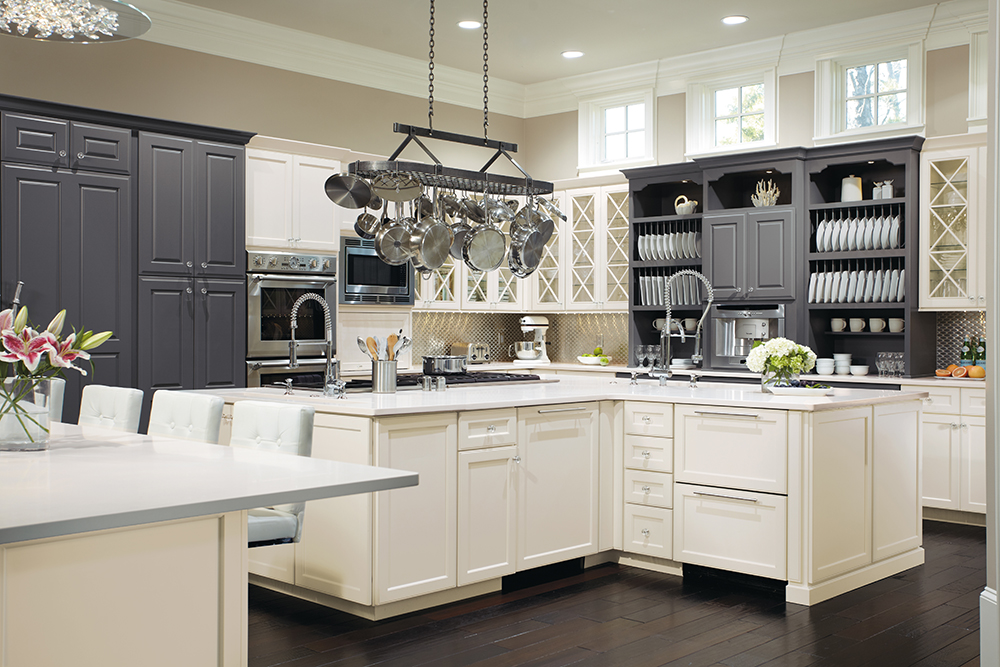
Key Takeaways:
The kitchen is often considered the heart of a home, and its cabinets play a crucial role in both its functionality and aesthetics. When it comes to kitchen renovations or upgrades, selecting the right cabinets can be a daunting task. With countless options in terms of materials, styles, and configurations, making the right choice can significantly impact your kitchen's overall look and feel. In this comprehensive guide, we will walk you through the process of choosing the perfect kitchen cabinets for your home.
Before diving into cabinet options, it's essential to evaluate your kitchen's layout and available space. Take accurate measurements of the kitchen area, including walls, floor space, and ceiling height. Consider the placement of appliances, sinks, and other fixtures. Understanding your kitchen's dimensions and layout will help you determine the cabinet sizes and configurations that will fit seamlessly into your space.
Kitchen cabinets come in a wide range of styles, from classic and traditional to modern and contemporary. Think about the overall style and aesthetics you want to achieve in your kitchen. Do you prefer a timeless and elegant look with raised-panel wooden cabinets, or are you more inclined towards a sleek and minimalist design with flat-panel, high-gloss cabinets? Your style preferences will guide your cabinet selection.
Cabinet materials significantly impact both the look and durability of your kitchen cabinets. Here are some popular options to consider:
The style of cabinet doors can significantly impact the overall look of your kitchen. Common cabinet door styles include:
Choose a door style that complements your kitchen's overall aesthetic and design.
Setting a budget is a crucial step in choosing kitchen cabinets. Cabinets can vary widely in price, depending on the materials, quality, and customization options. It's essential to strike a balance between your budget and your desired cabinet features. Consider not only the cost of the cabinets themselves but also any additional expenses for installation, hardware, and accessories.
Efficient storage is essential in any kitchen. Think about your storage needs and explore cabinet features that can maximize space utilization. Some storage options to consider include:
The hardware and accessories you choose can add the finishing touches to your kitchen cabinets. Cabinet knobs, handles, and pulls come in various styles and finishes, allowing you to customize the look of your cabinets. Additionally, consider adding features like soft-close hingesDefinition: Cabinet hinges that prevent doors from slamming shut, offering a smooth and quiet closin... and drawer glides for enhanced functionality and convenience.
If sustainability is a priority for you, explore eco-friendly cabinet options. Look for cabinets made from sustainable materials, such as bamboo or reclaimed woodDefinition: Wood that has been salvaged from old structures and repurposed for new uses, often in ca.... You can also opt for cabinets with low-VOC (volatile organic compound) finishes to reduce indoor air pollution.
Choosing kitchen cabinets is a significant investment, and it's essential to get it right. If you're uncertain about your choices or need expert advice, consider consulting with a kitchen designer or a cabinet specialist. They can provide valuable insights, help you create a cohesive design, and ensure that your cabinets meet your functional and aesthetic needs.
Once you've made your cabinet selections, it's time to plan for installation. Hiring a professional cabinet installer ensures that your cabinets are properly installed, aligned, and secured. Proper installation is crucial for the longevity and functionality of your kitchen cabinets.
In conclusion, selecting the right kitchen cabinets involves careful consideration of your kitchen's layout, your style preferences, budget constraints, and functional requirements. By following these steps and seeking professional guidance when needed, you can confidently choose kitchen cabinets that enhance the beauty and functionality of your home's most important space. Take your time, make informed decisions, and enjoy the process of transforming your kitchen into a space that reflects your unique style and meets your practical needs.
When selecting kitchen cabinets for a small kitchen, focus on maximizing space efficiency. Opt for cabinets with pull-out shelves, lazy Susans, and vertical storage solutions. Lighter colors and sleek, flat-panel doors can also help create the illusion of more space.
The best material for your kitchen cabinets depends on your budget, aesthetic preferences, and durability needs. Solid wood offers a classic look and durability, while MDF is budget-friendly and provides a smooth surface for painting. Plywood is strong and moisture-resistant, making it ideal for humid environments.
Popular cabinet door styles include Shaker, raised panel, flat panel, and slab. Shaker doors are versatile and fit various styles, raised panels offer a traditional look, flat panels provide a modern and clean appearance, and slab doors are perfect for a minimalist, contemporary kitchen.
To choose eco-friendly kitchen cabinets, look for options made from sustainable materials like bamboo or reclaimed wood. Additionally, consider cabinets with low-VOC finishes to minimize indoor air pollution, and opt for manufacturers that prioritize environmentally friendly practices.
While it's possible to install kitchen cabinets yourself, hiring a professional ensures proper alignment, security, and longevity of your cabinets. A professional installer can also handle complex configurations and avoid common installation issues, saving you time and potential costly mistakes.
BOOK AN APPOINTMENT